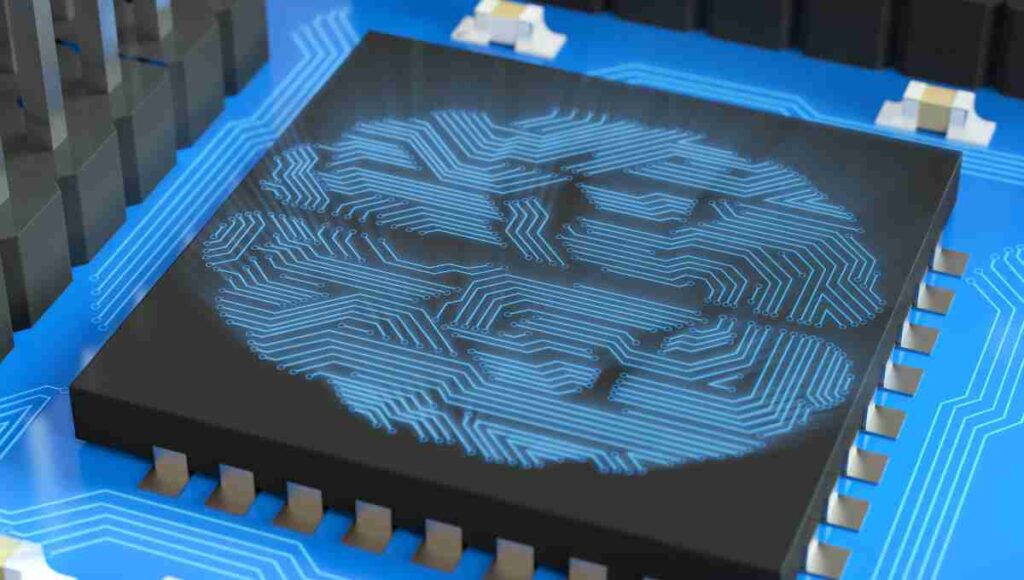
Neuralink’s objective may seem like a mad scientist’s diary at first. Since Elon Musk is the CEO, this image may be accurate.
However, if you look past what appears to be a science fiction horror film, you may get a glimpse of a very different future for humanity—one that includes a new sixth sense known as the Neuralink.
What Exactly Is Neuralink At This Moment?
Neuralink is a device that will be used first to help paraplegics do basic things like using an iPhone or a computer mouse without having to move. To be clear, studies on humans have not yet gotten underway. Although Elon Musk and his team are hopeful that they will get underway by the end of 2020, they have anchored that timeframe with the knowledge that getting FDA permission is not an easy process. According to Musk, prototypes of Neuralink have so far been evaluated on many species of rats and maybe even a monkey.
The Portion That Is Located Within the Brain
The Neuralink procedure does require the surgical implantation of certain components onto the outside of the patient’s brain. But putting things in the brain is nothing new. Research and development on this technology began in the 1970s, and it has been tested and used ever since. The main difference is that in the past, improvements did not include brain implants. After all, our brains are still a major mystery, and we have only recently begun deciphering the genetic underpinnings of our intellect.
In an ideal world, we would want to keep the holiness of this holy chamber intact, and I have no doubt that Elon Musk and his team would also prefer to achieve this goal. However, it’s not achievable at this juncture in time. They came to this conclusion after conducting a test with electrodes, which are instruments that are used to detect electric fields (in the brain, electric fields occur when nerves fire messages to one another; consequently, Neuralink utilizes the electrodes to detect when nerves are sending messages to one another).

One of the electrodes, which we will refer to as “electrode 1, was positioned such that it was directly on top of the neuron. Since it is right on the neuron, it would be able to pick up any electrical field that is made when the neuron fires. The researchers then moved one of the electrodes, which they will refer to as Electrode 2, farther away to see whether or not it was still able to detect an electric field caused by the neuron firing.
If it was possible, they moved it further and further away until Electrode 2 was no longer able to detect the neuron’s electrical signal. At that point, Electrode 1 would report that the neuron is firing, but Electrode 2 wouldn’t be able to confirm it. If it was possible, they moved it even further away. In other words, the distance between Electrode 2 and the neuron was insufficient. The distance in question was sixty nanometers. Without delving too far into the weeds, the reality of the matter is that a wavelength of 60 nanometers indicates that it must be located inside the skull rather than outside of it.
At a bare minimum, the electrodes would have to be implanted into the skull. And you can count on them to operate in precisely the same manner. The electrodes and a tiny receiver will be attached to the underside of the skull of the patient. No, you will not end up with an antenna protruding from your skull, and no, poles will not be impaling your brain.
Your index finger should be extended, and you should attempt to picture the chip sitting on top of it. It is definitely smaller than the AirPods that I now have in my ears, which are sending messages back and forth with my brain being caught in the crossfire. Now that you’ve seen it in person, you understand just how little it is. It will be encased in a cylinder that has a diameter of 8 millimeters and a height of 4 millimeters when it is finished.
There will be 1,024 very small electrodes emerging from the encasing. These electrodes are very thin and appear like microscopic threads. When I say “tiny,” I’m referring to anything that has a diameter of around 6 nanometers. To make the comparison, think about the diameter of your hair, then take that diameter and divide it by 10. Because it is so little, anything as relatively huge as a human hand just will not be able to implant on the brain. This is the motivation for Neuralink’s development of a robotic surgeon.
This robot is able to do the exact motions that are required to implant the threads into your brain. It may seem like an easy process, but when you consider how minuscule the threads are, you realize that it’s really a task that’s nearly as hard as properly landing a space rocket back on Earth – an experience that Musk is all too acquainted with.
These items are very, very tiny. They are not susceptible to being manipulated by hand in any way. The robot painstakingly removes each thread one at a time before inserting it into the brain. Therefore, we were required to construct a robot for surgery. Without the robot, the procedure can simply not be performed.
Max Hodak, President of the Neuralink Corporation
This is due to the fact that at that scale, there are other aspects that it needs to take into consideration, such as breathing and pulse. Both of these occur without the patient’s consent. It is possible for someone who is not under total sedation to attempt to hold their breath for the duration of the surgery, which takes an hour, but can that person maintain their heartbeat? I really doubt that anybody would suggest doing that.
You may be concerned that prodding at the brain would cause you to suffer from severe headaches due to the discomfort. The correct response is “no.” To begin, there are no pain receptors in the brain, which means that you will not experience any discomfort. Secondly, the electrodes themselves are very thin. If the hair example doesn’t help you picture it, think of it this way: those electrodes are thinner than a mosquito’s proboscis, which is the long needle it sticks out when it wants to drink your blood. The Labium, the inside of a mosquito’s mouth, is about 40 nanometers wide, while the electrode is only 6 nanometers wide. When was the last time you felt the itching and discomfort of a mosquito bite?
When determining the correct locations in which to implant each electrode, the Neuralink surgical robot takes into consideration various aspects. This reduces the risk of accidentally striking a blood vessel, which would be detrimental to the health of the brain.
The Portion of the CNS That Is Located Outside of the Brain
The majority of us would consider it a once-in-a-lifetime opportunity if we were given the opportunity to have a bionic superbrain chip surgically inserted into our skulls using robotic technology. Musk and his crew have expressed their desire to preserve the status quo. The installation of software updates is already a nuisance, and they never take place at a time that is convenient for us. Some of the allure that having a superbrain would offer is diminished when one considers the prospect of needing to see a nearby neurosurgeon each time the software has to be updated. Therefore, a significant portion of Neuralink is located outside of the skull, as a wearable device situated behind the ear.
This piece of wearable technology, which is known as the Link, is responsible for housing both the software and the battery. Therefore, when the battery life reaches 5%, you may easily remove the gadget and put it back in to charge. The same is true for an update to the program; the processing takes place on the Link.
How Neuralink Sees Itself in the World
Its goal is to become a computer that resides within the brains of all humans, one that we do not need to take about with us and that operates invisibly while it is in use. Even while Elon Musk presumably enjoys the thought of assisting those who are paralyzed, it seems that nothing makes him happier than the prospect of giving our future AI rulers a solid kick below the belt. And he has faith that Neuralink will be the one to land that punch.
He views the implantation of Neuralink’s brain chip as a kind of elective surgery in the [unmeasurable] future. This indicates that insurance companies in the United States will not be required to pay for it. Apologies, but the above phrase was only a satirical poke at the farce that is the healthcare system in the United States. To speak more seriously, what that implies is that people won’t need it, but they will desire it. It is possible that it will become more widespread than cosmetic surgery all over the globe (maybe with the exception of Beverly Hills).
The use of Neuralink is not required in any way. You have the option of having this item in your life if you so choose. I think this is something that will be very important on a scale that includes whole civilizations.
Elon Musk
It’s interesting to note that Musk claims that Neuralink won’t be required, but if everyone else in your vicinity has a brain as fast as a quantum computer, you may need one for yourself if you want to compete for whatever employment might still be available for humans in the future. However, John Connor, or should I say Elon Musk, believes that with the help of Neuralink, we will be able to fight the eventual Skynet.
What is the Potential of Neuralink

Bigger than Apple or any other existing tech company, with the possible exception of Amazon (since if it weren’t for them, where else could we purchase with our minds?). Well, at least from a capitalist point of view. You don’t need an iPhone or an Apple Watch because you already have everything you need in your brain; in fact, you don’t even need an Apple Watch right now since you already have everything you need in your head! If the Neuralink project is successful, it will alter the course that future innovation takes. When visualizing a future with Neurallink, what was formerly thought to be highly revolutionary but was still out of reach (for example, augmented reality glasses) now appears a little bit old.
But Neuralink can do a lot more than just fun games like Space Invaders that use augmented reality. For instance, the concept of telepathy is becoming less and less plausible these days. After all, the signals that are being received by the electrodes have the capability of being wirelessly sent to electronic devices, and the Link earpiece is an electronic device in and of itself. It would be quite similar to airdropping photographs between iPhones if the messages could be sent from one Link device to another.
When you factor in quantum entanglement, it’s possible that we’ll one day be able to have telepathic conversations with our Martian relatives. There is a good chance that the technology developed by Neuralink won’t be able to produce whole phrases from the little firings that occur in your neurons at this point in time; nevertheless, it can be taught to convert specific firing patterns into maybe visuals. Or single words. In addition, this particular characteristic is amenable to development through time.
In addition to this, the rate of communication will quicken. At the moment, the speed at which I can talk is limited by how quickly my fingers can move across the keyboard without getting lost on planet QWERTY. When I’m using my phone, the most important thing is how quickly I can weave my thumbs. Even while I’m talking, the most I can say in a given amount of time before my tongue becomes twisted is. However, a mind’s ideas occur in the present moment. It’s possible that Neuralink may one day be able to record my immediate thoughts and convert them into instant communication even quicker than my lips can form words.
Another, more controversial usage may be as a substitute for illegal drugs; nonetheless, we will begin with the more socially acceptable recreational uses. In order to experience the benefits of coffee, cigarettes, or alcohol, you wouldn’t have to consume them in their traditional forms anymore. It is possible that such companies may one day be sent to the “industrial cemetery” and replaced by an app version that can be purchased for $0.99 (or perhaps for $50 when accounting for inflation). In a digital setting, misuse of other, more illegal ones, is also possible. This possibility does, however, raise issues regarding the manner in which Neuralink plans to manage the usage of its software, including the development of the program by third parties. However, it seems that governments are preoccupied with Facebook’s Libra at the moment; as a result, this is a problem that they will have to address at a later time.
The Concerns Regarding the Future
When it comes to issues of concern, there is also a list of such. Computer networks are now facing a significant challenge in the form of ransomware, which is a virus that encrypts your data on your computer and then deletes them one by one until you pay a ransom (often in Bitcoin). Now picture it happening inside your head. Hacking, software problems, and hardware faults could all pose a risk to your day-to-day activities.
In the not-too-distant future, one of the things that might be cause for worry is Neuralink’s capacity to not only receive signals but also fire its own signals; in other words, it has the potential to carry out tasks in place of your neurons. But the brain is very sensitive, and it changes as a person ages in response to many different things. These stimuli include chemicals and the manner in which neurons connect with one another. The inclusion of Neuralink into the mix has the potential to alter the way in which our brains develop.








